May 07, 2025
Author:Sam Wonder
Promoting your dog's well-being depends on knowing the stages she goes through as a parent, especially for females who have not been spayed. Her heat cycle is one of the most significant turning points, which causes noticeable physical and behavioural changes.
Being aware of these changes—and recognizing them early—can make a significant difference in how you respond and care for her during this time. It enables you to provide comfort, safety, and proper management, while also helping to prevent accidental pregnancies. In this guide, we’ll walk you through the essentials of the female dog in heat, highlight key behaviors to look out for, and offer tips on how to best support your dog through each phase with confidence and compassion.
The oestrous stage is the period window during which a female dog becomes reproductive and capable of breeding. Though the specific period may vary according to her breed, it generally starts around six months of age. While most dogs undergo this cycle twice yearly, some may enter heat more often.
The cycle will bring your dog several hormonal changes that will influence her body and temperament. Knowing these phases will enable you to respond appropriately and assist in preventing unplanned pregnancies.

Knowing the four distinct stages your dog will pass through helps one to start certain behaviours:
This is the first phase of the heat cycle, which typically lasts 7-10 days. During this phase, female dogs may show changes in behavior such as increased attraction to male dogs, swelling of the vulva, and bloody discharge. However, they are not yet receptive to mating.
Oestrus is the productive phase, lasting from days 10 to 20. Your dog might actively seek male attention; the discharge usually gets lighter or straw-coloured. She may also show signs of more attachment or flirtation, which could cause mating.
Around 60 days, your dog's body prepares to return to its normal rhythm after oestrus. If she hasn't been bred, her fertility stops, and her hormone levels drop consistently.
A time of rest and recovery between cycles—anestrus—during which no reproduction occurs. It lasts until the beginning of the next heat cycle in female dogs.
Knowing heat-related actions helps you better meet your dog's physical and emotional requirements and stop unanticipated littering. Some dogs might misbehave or seem upset during this time, while others might become more clingy or anxious. Knowing what is going on behind the scenes helps you respond patiently and with the right help.
At every phase of her cycle, one should anticipate the following:
Your dog may start showing more devotion than usual, which marks the earliest sign. Whether she's resting next to you on the couch or watching everything you do, she needs affection and intimacy more than ever, particularly during proestrus and heat. Hormonal fluctuations induce this emotional alteration, which is quite natural.
● She might show behaviours such as being restless and pacing the home.
● Excessive genital licking
● Barking or whining to draw attention
● Showing more interest in or sitting in front of male dogs
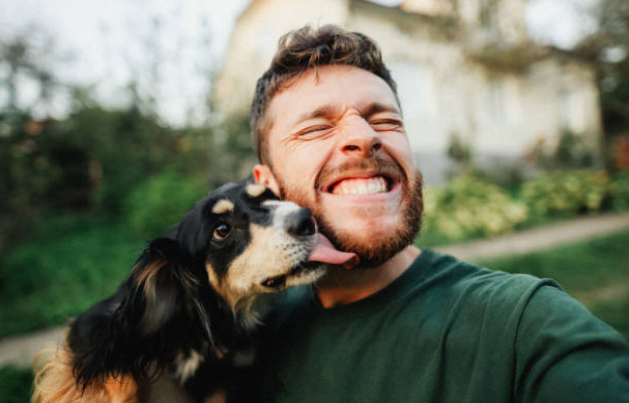
A significant shift in a dog's appearance is one sign that she is in heat. During proestrus, the vulva will enlarge, and she will begin to bleed or release a dark red colour. This discharge, which results from hormonal changes, is one of the most obvious signs a dog is in heat. The hue of the discharge will change with the cycle:
● Proestrus: An indication of proestrus is bloody flow, usually dark crimson.
● Estrus: There is a lighter or clearer discharge as the female gets pregnant and receptive.
When your female dog enters the oestrous phase, you will notice that she becomes more attractive to males. Fuelled by her body's reproductive cycle, this conduct is among dogs' most common in-heat behaviours. Male dogs will often grow more pushy in their quest to mate, sometimes barking or even trying to follow her about.
You may also see that male dogs start to take more interest in your female dog. She might do stuff like:
● Lift her tail to the side, which is sometimes known as the "flagging" position.
● Being more at ease or even submissive in the company of masculine dogs.
● She must pee outside as she marks her territory with more potent pheromones.
Hormonal changes throughout the heat cycle in female dogs make female dogs more restless or irritated. Your dog can show anxious behaviour, pace the yard or house, or start talking more. She may also experience mood changes, from sudden bursts of anger to clinging love.
Some dogs may become agitated or even destructive at this stage, particularly if kept indoors for long periods of time. Often, this activity is related to the increased energy and discontent linked to the mating drive.

Many female dogs change their dietary habits when in heat. Though some dogs may eat more than usual, others can lose their appetite. Hormonal changes during the heat cycle in female dogs could be the reason for this. Though not a frequent symptom, you should know it as one of your dog's signs that she is in heat.
Often, female dogs begin licking their vaginal area excessively as part of the physical changes happening during the heat. This habit could appear more apparent if your pup has outdoor access or if you own other dogs in the house.
Urine marking is another common dog in heat behavior. Female dogs in estrus produce stronger-smelling urine, which they may use to mark their territory. This behavior may be more noticeable if you have multiple dogs in the household or if your dog has access to the outdoors.
The urine marking during heat is a way for your dog to signal her presence to nearby male dogs, announcing her availability for mating.
Knowing how to look after a female dog in heat is essential following a conversation on the typical behaviours of such a dog.
To prevent unplanned mating, your dog should be contained indoors or in a suitably fenced yard. Since male dogs can be determined to get close to her, controlling her environment is really important.
Control the discharge and clean your home using washable pads or dog nappies. To avoid infection or irritation, clean her vaginal region often with a moist towel. Keep an eye on her health for any signs of pain or sickness, as you would with regular grooming, bad-smelling discharge, or urinary problems.
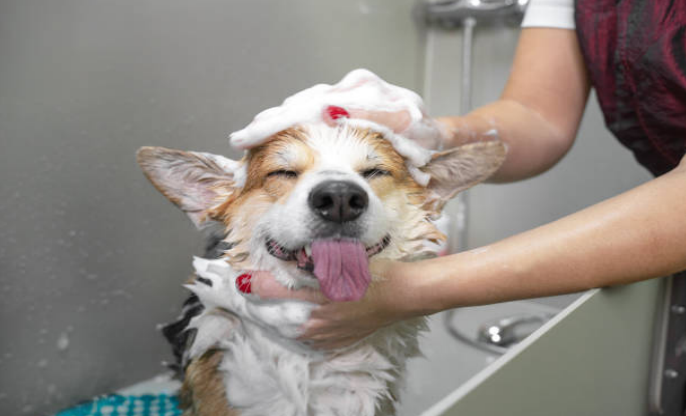
Pay attention to any signs of discomfort or infection, such as excessive licking, foul-smelling discharge, or difficulty urinating. If any of these symptoms occur, it’s important to consult a veterinarian.
If you do not intend to breed your dog, spaying is the best method to prevent the discomfort and health concerns of the heat cycle. Talk to your doctor about the benefits of spaying and the timing.
Your dog may become overwhelmed by her heightened senses and instincts. Set up a quiet, cozy area in the house where she can retreat to when she feels stressed. Use her favorite blanket or toys to make the space inviting.
Some dogs crave extra cuddles during their heat, while others prefer to be left alone. Pay close attention to her body language and cues. If she seems to seek you out, offer gentle petting or soothing words. If she withdraws, respect her space.
Excess energy can make her restless. Engage her mind with puzzle toys, scent games, or light indoor training sessions. This can help ease anxiety and distract her from any discomfort.
Dogs thrive on routine, and any disruption to their normal schedule during heat can increase anxiety. Stick to her regular feeding, walking, and playtime schedules to help her feel grounded and secure.
Responsible pet ownership calls for understanding the usual behaviours of a female dog in heat. Being aware of her apparent symptoms in season allows you to control a dog's ease, prevent unwanted mating, and ensure her needs are met during this natural season. Should your dog's behavioural changes concern you significantly, or should you need help controlling her throughout her fertility cycle, always feel free to seek your doctor's help.
If you're unclear about how to negotiate your dog's heat period or are thinking of neutering her, talk to your veterinarian about the finest choices for your pet's health and care. Also, look at WOpet's selection of goods, like our automatic feeders and other pet care supplies, to help your dog be happy and well-cared for.
Visit our WOpet blog and store to see our range of pet-friendly products for more useful dog care tips.
Label:
Popular Post
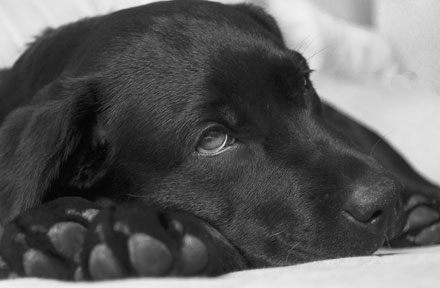
What to Feed a Sick Dog With No Appetite? [2025 Guide]
May 16, 2023
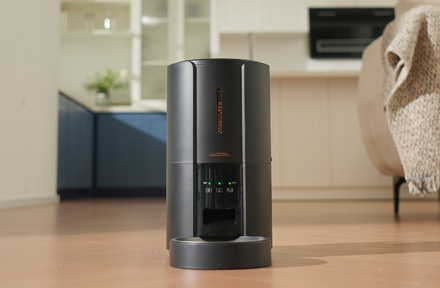
Troubleshooting Common Issues with Automatic Pet Feeders: Tips & Tricks for Pet Owners
Oct 26, 2023
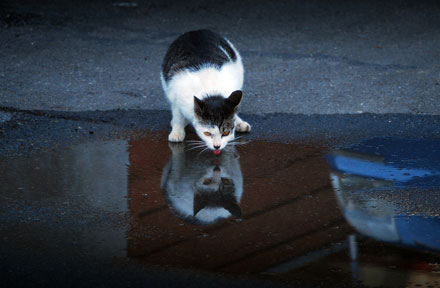
Why Does My Cat Cough After Drinking Water? 8 Potential Reasons
Mar 13, 2023
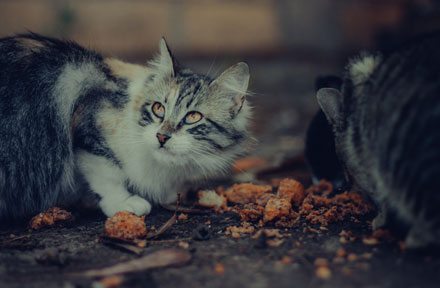
My Cat Only Eats A Little at A Time - What to Do?
Feb 27, 2023
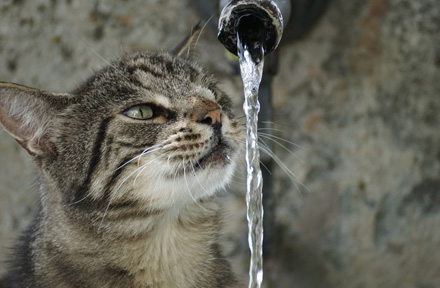
Why is My Cat Throwing up Water? Top 5 Causes Here
Feb 08, 2023
$99.99
$129.99
Copyright © 2025 WOPET. All Rights Reserved.